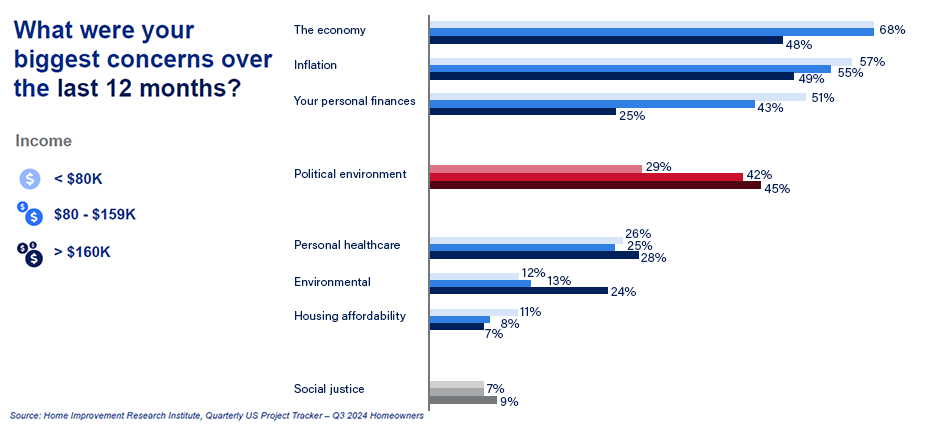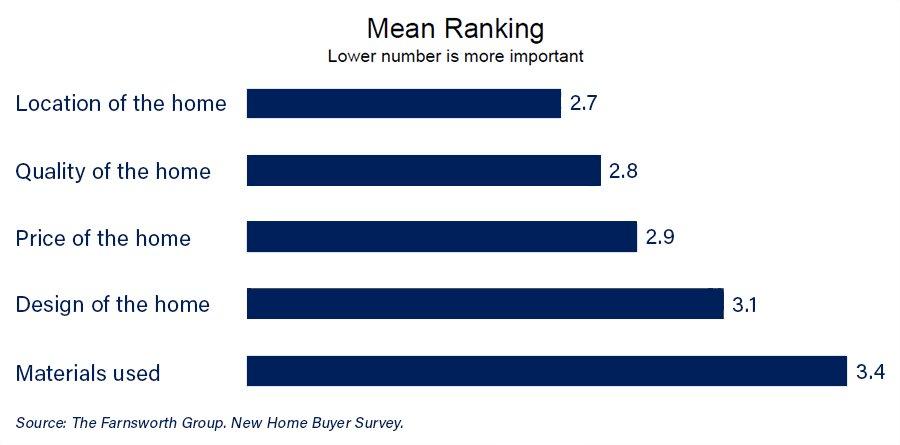BUILDING CONSUMER CONFIDENCE: 6 STRATEGIES FOR OVERCOMING HOMEBUYER UNCERTAINTY IN TODAY'S HOUSING MARKET
A home is often the single largest investment people make, and as such, there is no purchase more likely to be impacted by how someone feels about the state of the economy. Studies show consumer confidence significantly impacts the housing market, and recent insights from industry experts indicate heightened uncertainty and cautious financial attitudes among consumers in 2025. Here’s how professional homebuilders can strategically navigate these waters to effectively address these issues.
UNDERSTANDING TODAY'S CONSUMER MINDSET
The Consumer Sentiment Index reveals that consumer confidence in June 2025 hovers in a range indicative of uncertainty. The most recent release rates sentiment at 60.5, which is actually an upgrade from May - the first increase since December - as concerns over tariffs are softening, but still down 11.3% year over year and near historical lows. This scoring level is characterized by cautious spending rather than outright resistance, and as a result, buyers today are making highly calculated financial choices, frequently evaluating trade-offs between housing investments and other significant expenditures like travel and entertainment.
Additionally, the index reports growing concern about future inflation. Those expectations have decreased for two straight months and are at the lowest levels in three months, as consumers are still concerned about the potential impact of tariffs going forward.
The majority of respondents in a recent consumer survey say now is simply "not the ideal time" to buy a home, with only 10% of consumers specifically pointing to affordability as their reason for hesitation. Nearly all top consumer concerns remain finance-driven, reflecting continued sensitivity around budgeting. Consumers aren't entirely avoiding spending but are critically assessing the value proposition of each purchase.

Ali Wolf, Chief Economist at Zonda, underscored this in her recent Market Intelligence Webinar, with data showing that consumer confidence is at its lowest since March 2020, and 72% of Americans extremely or very concerned about the possibility of a recession.
To help illustrate this, Wolf distinguishes between hard data and soft data as two types of economic factors influencing consumer confidence:
- Hard Data: Objective indicators such as job growth and home sales, currently grading around a B-level, indicating relatively stable economic activity.
- Soft Data: Sentiment-based indicators gathered from surveys reflecting consumers’ and businesses' feelings, currently grading at a D-level, indicating significant uncertainty and pessimism.
The hard data indicates certain economic factors are performing quite well. Unemployment numbers are strong. Consumer spending in general is strong. However, the soft data shows that people are still very concerned about the economy. This discrepancy between hard and soft data illustrates the complexity of the current economic landscape, where objective measures show relative stability, but subjective perceptions are negative, driving consumer caution.
THE POWER OF AFFIRMATION
If the problem for many potential homebuyers is not that they can’t afford a home, but that they don’t feel confident enough in the economy to make the commitment of a home purchase, how can builders overcome that obstacle?
It's important to recognize the concept of "affirmation"—the critical psychological need for buyers to feel confident and validated in their decisions. Given the current financial caution, providing affirmation can make a significant difference. Builders should proactively reinforce the positive outcomes and long-term value of purchasing decisions, consistently reassuring buyers that they are making smart, beneficial choices.
ACTIONABLE STRATEGIES FOR HOMEBUILDERS
To effectively navigate and boost consumer confidence, professional builders should consider these strategies:
1. CLEAR AND FREQUENT COMMUNICATION
The homebuying process is long and complex, with purchasers of newly built homes typically going through a multi-month journey. Consumers consistently highlight the need for transparent, timely communication throughout the homebuying process. Homebuilders can foster confidence by:
- Providing detailed and readily accessible information on pricing, floor plans and the purchasing process.
- Using multiple communication channels—email, phone, video, chat—to remain accessible and responsive, given that research shows buyers engage with their builders frequently, often weekly or even daily. 82% of respondents said their builders communicated in person if they were involved in the purchase process.
2. EMPHASIZING VALUE AND COST TRANSPARENCY
Given the heightened financial sensitivity, builders should emphasize how their homes offer superior value.

1=most important, 2=second most important and so on.
- Clearly explain pricing structures, emphasizing long-term savings through energy efficiency, durability and reduced maintenance costs. In another recent survey, quality of a home was second only to location in a consumer ranking of important factors in home selection – ranking even higher than the price of a home.
- Leverage current pricing dynamics. Research indicates new homes—in some markets—now may be able to match or undercut existing home prices. Highlighting this unique competitive edge in conversations and marketing materials could prove beneficial..
3. ADDRESSING AFFORDABILITY PROACTIVELY
With affordability concerns central, builders should proactively offer solutions such as:
- Flexible financing options or mortgage-rate buy-down programs. Ali Wolf notes that builders' widespread use of incentives like mortgage-rate buy-downs are essential to maintaining sales momentum.
- Strategic incentive packages tailored to customer needs, such as credits towards closing costs, design selections or other personalized benefits.
4. CAPITALIZING ON TAILORED SEGMENTATION
Builders can optimize sales strategies by segmenting their audiences more deliberately:
- Prioritize your demographics. For example, studies show that Millennials, now mostly in their 30s and early 40s, are in their prime homebuying years. Design your strategies to meet their needs by emphasizing digital communication, making your information findable and being clear on the process for those new to it.
- Understand the differences between consumer demographics and customize marketing efforts and follow-up strategies based on their profiles to maximize engagement and conversion rates.
5. ENHANCING DIGITAL AND HUMAN INTERACTION
Leverage your available digital tools alongside human interactions. Builders should:
- Ensure comprehensive digital platforms are optimized for user experience, offering interactive floor plans, virtual tours and clear, immediate access to information, addressing one of the top consumer challenges: the difficulty of finding essential information.
- Foster strong partnerships with real estate agents, who significantly influence consumer decisions during extended purchasing processes, with 66% of buyers involving realtors in their buying journey.
6. STREAMLINING THE CUSTOMER JOURNEY
Simplifying the homebuying process can significantly enhance buyer confidence:
- Clearly outline each step of the buying process upfront to eliminate surprises and reduce anxiety, ensuring easy access to key information on lot details, pricing and customization options.
- Provide frequent updates and consistent check-ins to keep buyers informed and engaged throughout prolonged purchase timelines, which often span eight months or more.
THE ROAD AHEAD
While current consumer sentiment may reflect caution, strategic approaches centered on transparent communication, clear value propositions and personalized experiences can effectively address buyer concerns. By proactively understanding and responding to consumer mindsets, including leveraging affirmation to bolster confidence, professional homebuilders can mitigate uncertainty and successfully navigate the evolving landscape of the housing market in 2025 and beyond.
